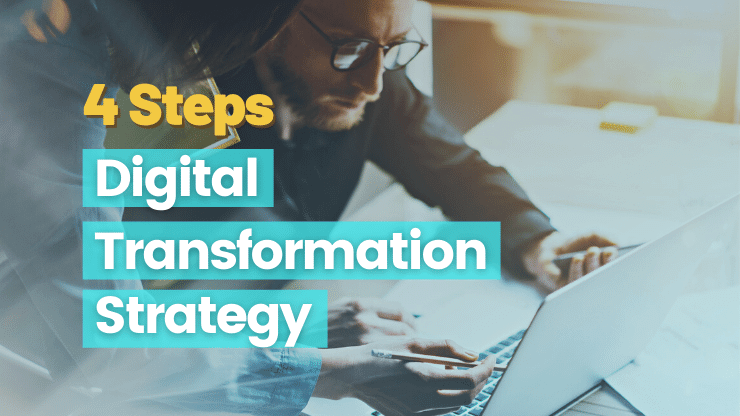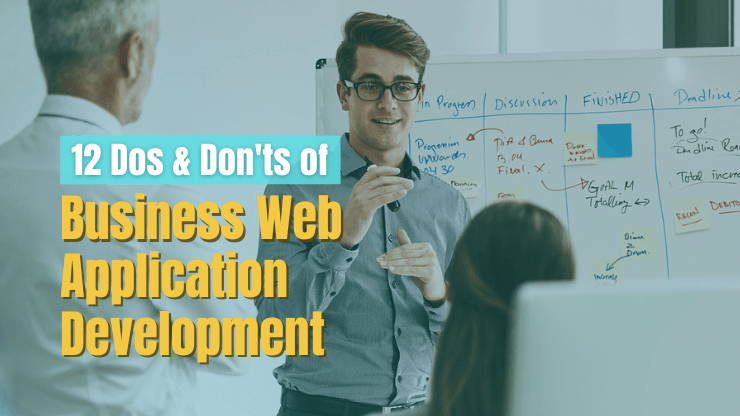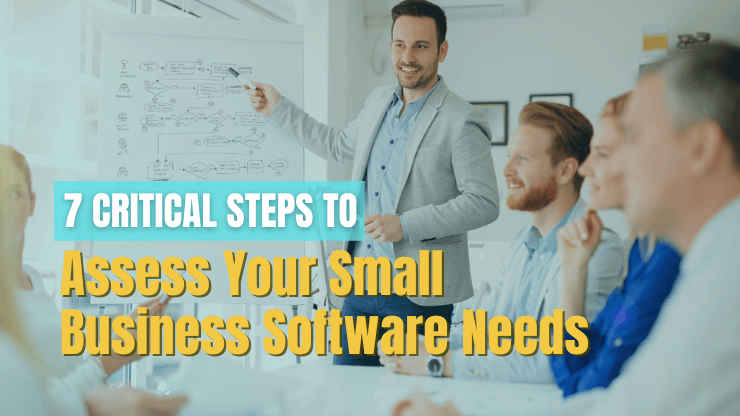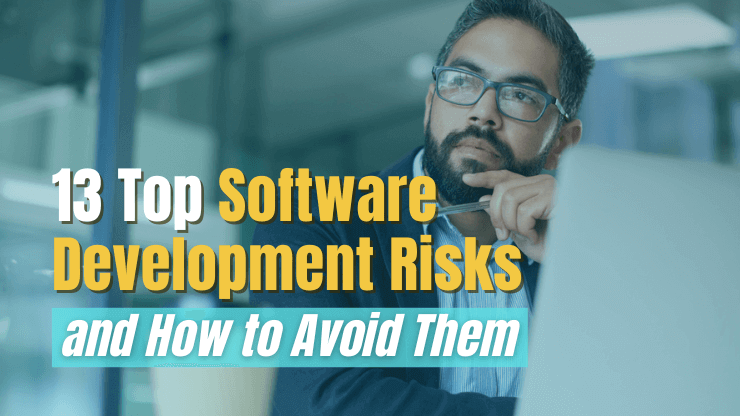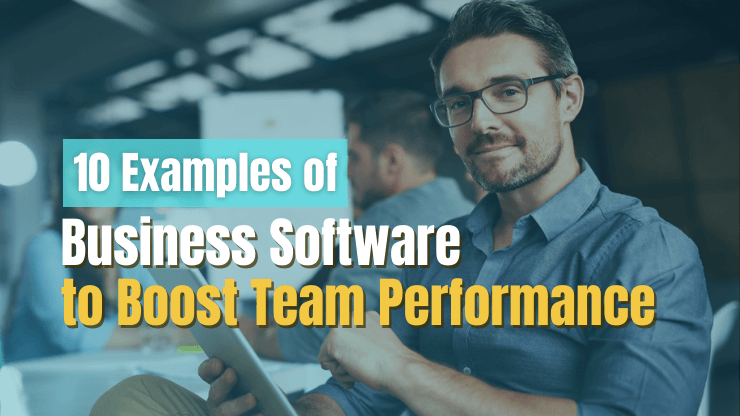Digital technologies have taken over our lives on many levels. We hear about digital technologies, digital data, digital media, digital transformation, digital marketing. Following this lead, make digital transformations in our opinion have a huge impact on the future of many companies. But what exactly the digital transformation is? And why having a digital transformation strategy is important?
This article will help you gain knowledge in this area and choose the right digital transformation journey for your business no matter what business models you use.
What is digital transformation?
More than half of the companies are transforming, putting their digital initiatives at the core of their business strategy. Before you decide to run a digital strategy, regardless of whether you are a medium or a large company, make sure that the definition and areas of development are well known to you.
Digital transformation is often defined as the integration of digital technology across all functional areas of a company in order to foster more sustainable connections and better understand consumer requirements. But digital transformation is more than that…
It is certainly a powerful tool for moving businesses forward and a new way to interact with the client. It provides a wide range of possibilities that will allow you to strengthen existing services and discover new ones.
Top reasons for going digital:
- Improve customer experience and engagement
- Increase efficiency
- Improve business decision making
- Improve innovation
- Transform the business
Let's discuss how important it is to plan and strategize now that we've established the importance of digital transformation.
Impact of Digital transformation strategy on various areas in company
Most significantly, they must be able to create bridges between information, data, processes, technologies, human factors, and others.
In a business reality where ‘the business' increasingly decides on technology budgets, we see IT and information management professionals struggling to speak the language of the CMO or other business executives who are not their ‘target audience'.
It's one of the reasons why IT companies are creating or purchasing "digital transformation consultants" with origins in marketing, business, or even agency.
Effective change management is critical to going digital (Deloitte, infographic below)
It's also why some digital transformation consulting companies are struggling to expand. They can't meet the growing need for end-to-end digital transformation strategies because they lack deep IT and information management capabilities.
That is, many of them struggle to establish the bridges needed in the holistic phenomena known as digital transformation.
Business & information/processesAlternatively, many marketing executives are unfamiliar with business process management, critical technology advancements, and ideas or techniques of business process reengineering and/or optimization.
Strategies for digital transformation
There are more bridges to create than simply those between IT and business. We've already discussed the need for information bridges between back end and front office, content and processes (integration), human and machine, and machine to machine (Internet of Things), raw data and actionable intelligence, etc. As previously said, integrating information/content and processes is essential for the company and knowledge worker.
According to Professor Michael Wade, all companies must acquire three fundamental capabilities: hyper-awareness, educated decision-making, and rapid execution. More in the presentation below.
It's easy to see how much bridging of processes, people, information sources, silos, and gaps is required.
Actionable intelligenceInformation is everywhere and drives digital transformation. Big data quantities, formats, and sources are exploding. The challenge for top businesses is how to convert all this data into actionable information that leads to new possibilities.
Managing information needs a comprehensive and integrated strategy. To empower knowledge workers, better serve consumers, and obtain the appropriate information and insight when, when, and how you need it, many procedures and integrations are required.
End-to-end information management excellence, customized to the specific needs of businesses, customers, ecosystems, and increasingly, digital transformation, is essential to the success of any digital transformation plan. In reality, numerous bridges must be built to close remaining gaps and chasms.
Finally, moving from information to knowledge and intelligence needs data/content analytics and (therefore) artificial intelligence.
Human & EcosystemHumans have plenty of bridges to build. An end-to-end customer experience is critical in digital transformation initiatives. Customer relationships need greater depth, breadth (and customization) than ever before.
Bridges between various functions and, increasingly, between business execs and leaders from many companies who are building the ecosystems of value required in an economy where new business models and revenue streams increasingly dictate both the business and technology a The customer (external and internal, including workers, and change management) is the driving force for numerous bridges to be built.
Businesses that participate in collaborative ecosystems and communities of innovation are stronger in a culture of co-opetition and co-creation.
A technological reality increasingly centered on data, actionable information, software, and connectivity enables the creation of new income streams by linking systems of value and creating bridges. This dimension will grow as the Internet of Things (IoT) connects everything and provides more actionable information.
In a digital transformation economy and strategy context, collaboration and co-creation clearly go beyond the enterprise and existing ecosystems, building new networks and ecosystems where data and actionable intelligence are used for future growth and whole new business models.
Co-opetition is a concept that has been around for many decades.
We encourage you to read the classic ‘Coopetition‘ by Adam M. Brandenburger and Barry J. Nalebuff, published in 1996. It has long been one of our top 10 business books, and given the holistic reality of business and digital change, it may inspire you as it did us.
Several industries are seeing co-opetition as both incumbents and disruptive firms realize that it is preferable to work together than to go in solely competitive. Fintech is a good example.
Speaking about disruptive businesses, notice that co-opetition builds upon a particular element of the industry attractiveness assessment model, commonly known as the ‘six forces model,' where ‘new entrants' are one of the main factors.
Technologie & InnovationIt's easy to forget that these many technologies are all part of one single, more holistic perspective, defined by the end goals why we ‘invented' and use them.
But knowing what these technologies can do isn't enough to enjoy the advantages and possibilities. It's just as vital to grasp how they all relate to your digital transformation plan, actionable information, and possibilities. Most individuals understand that an end-to-end perspective is required to develop new company strategies or address problems of any kind.
We must also understand them personally. You need to know more than just what the Internet of Things is and can accomplish. So that's what we aim for. But don't forget to create bridges between your knowledge and the objectives you want to accomplish on one hand, and all the technologies that fit in your specific company environment on the other.
This requires understanding their position in the larger picture of digital transformation, as well as the glue that links them and ultimately allows you to make a difference with your approach. And that's where people, purpose, innovation, optimization, information, processes, value, and business models meet.
Before you move with your Digital Transformation Strategy
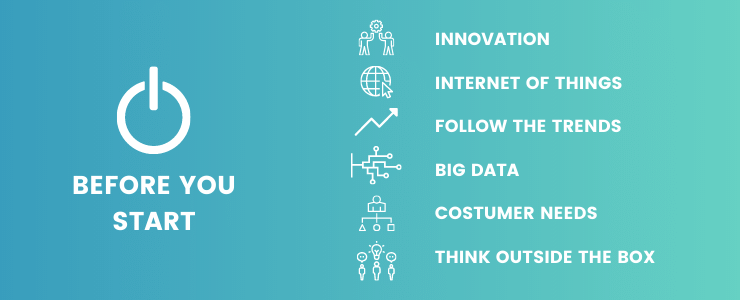
Innovation
Currently, the only thing we can sure is change. Everything is developing very quickly, so that it is necessary to follow these changes to stay up-to-date. To remain competitive, strive for excellence and innovation today.
Internet of Things
Internet of Things influence huge impact on our reality and gives us a lot of opportunities. It powerful to which bring benefits to both businesses ans customers. A lot of objects ale connectced to the Internet.
Follow the trends
Traditional media is dwindling, while digital media is expected to overtake traditional media as the leading source of advertising income. The Internet is the quickest way to get information.
Big Data
There is a lot of useful data available, but not everyone understands how to effectively use it. Analytics enables us to comprehend how consumers act, what they really believe about the brand, and how the market perceives your company.
Costumer needs
A good product is not the only recipe for success. It is important to thinking about client's needs and to be open to adapt this new needs of customers.
Think outside the box
Be a leader in your area; generate value where others believe it is impossible.
4 Steps to a Successful Digital Transformation Strategy
Digital transformation strategy it’s something more about technology. It is holistic and requires cooperation and integration. Digital transformation strategy is focused on components and bridges to connect them, as well as new bridges and barriers to overcome them.
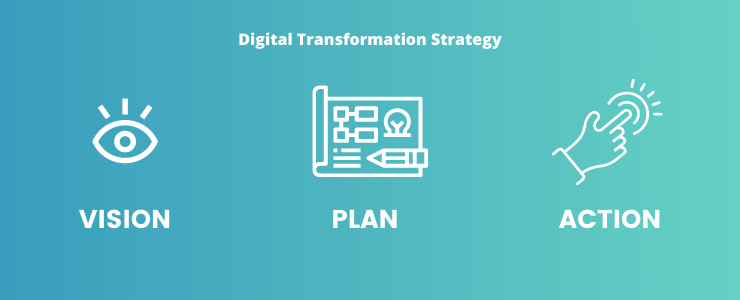
The strategy can be divided into 3 main elements:
- VISION
- PLAN
- ACTION
*Vision of Digital Transformation strategy can be divided into two-step: determining 3 core capabilities and capturing what, why, and who.
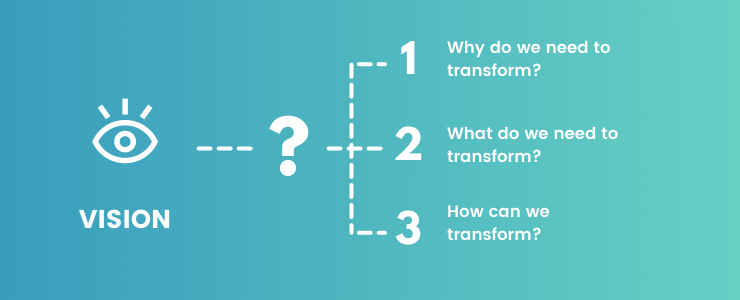
Use the following steps to build your digital strategy:
Build fundamental capabilities
All businesses must build three fundamental capabilities in order to successfully manage digital transformation and protect against digital disruption.
Hyper-awareness
- Identify market, evolutions, pain points
- Assess/benchmark where you are
- Assess skill set, culture, and readiness
- Map current status with major evolutions and opportunities
- Gap bridges with customers and stakeholders
- Focus on long term with intermediate goals
- Repeat and innovate
Informed-making
- Analyze/prioritize significant evolutions
- Focus on core intangible assets: customers, data
- Base strategy on where you are and go
- Include external and internal help
- Develop a roadmap to get where you need
- Get clear leadership buy-in
- Set goals and KPIs
Fast execution
- Design for innovation optimization agility and scale
- Optimize information and maturity
- Connect technologies and data in function od strategy
- Build for ecosystem and platforms
- Start where it makes sense
- Learn, measure reassess, scale
Start with the what, why, and who
By answering the three main issues of what, why, and how, you may define the manager's and workers' tasks. Each aspect of the plan will be comprehensible and transparent to everyone as a result of these activities. Additionally, it eliminates mistakes and confusion.
- What is the long-term objective?
- What are intermediate objectives?
- What needs to be connected?
- Why did "we" see a need to transform?
- Who can help with the building blocks and barriers?
- How is the customer involved?
- What ecosystems can augment our goals?
- Who signs off the strategy, means and KPIs to achieve what?
Build a roadmap to transformation
The plan can be divided into several basic stages, but remember that it can be modified for your own needs. The last stage of the plan belongs to individual determination by the company because it is difficult to predict what actions should be applied to each of the possible situations.
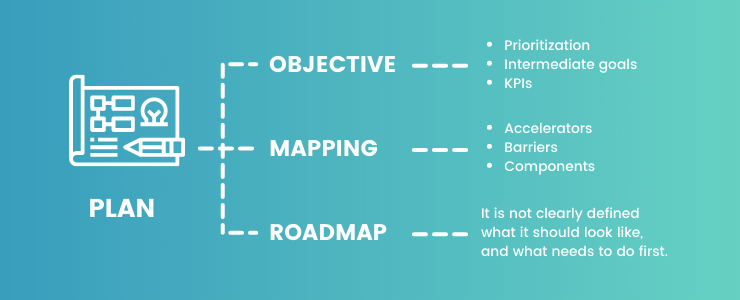
Validated learning is everything
Execute and optimize in a prioritized way, taking into account the urgency, impact, effort, and timeline.
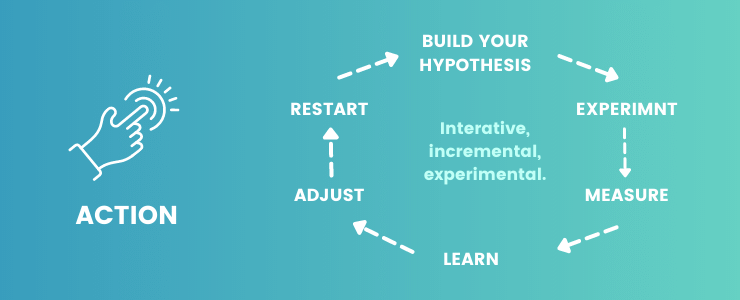
5 Biggest Challenges to a Successful Digital Transformation
Acceleration using digital technology
Rapidly establish a digital technology architecture capable of connecting the front, middle, and back offices.
Client behavior
Create customer-centric business models that are based on digital commerce, in which customers purchase and interact via integrated digital channels – increasingly with little or no physical touch.
Logistics and operations
Businesses gain resilience and flexibility to adapt to consumer requirements and market dynamics by digitally interacting with suppliers and service providers and investing in analytics.
Methods of operation
Organizations must become more agile by utilizing both internal and external resources to get the talents they require, as well as integrating a physical and virtual footprint.
Resilience
Organizations that are digitally enabled are better equipped to resist the effects of pandemics (and other shocks) and should be considerably more nimble in their recovery efforts.
Conclusion
The core rule of digital transformation is that if you are not online, you are invisible. The method, however, requires precise preparation and strategy.
Customers, current workers, and prospective candidates all desire the best experiences and possibilities available. And businesses have no choice but to actively seek them out and continuously improve their ability to engage and retain them.
We live in a digital, global, and hyperconnected world that is undergoing social and technical upheaval, with the constant entry of new market actors, off-site mobility, and continuous connectivity having a substantial influence.
Today, digital transformation is not a choice; it is vital to break free from our comfort zones, reinvent ourselves, and compete in a technologically advanced environment.

